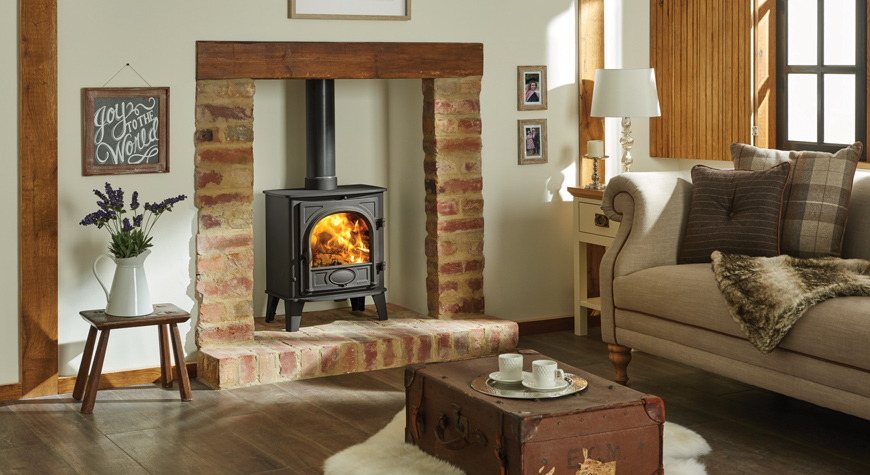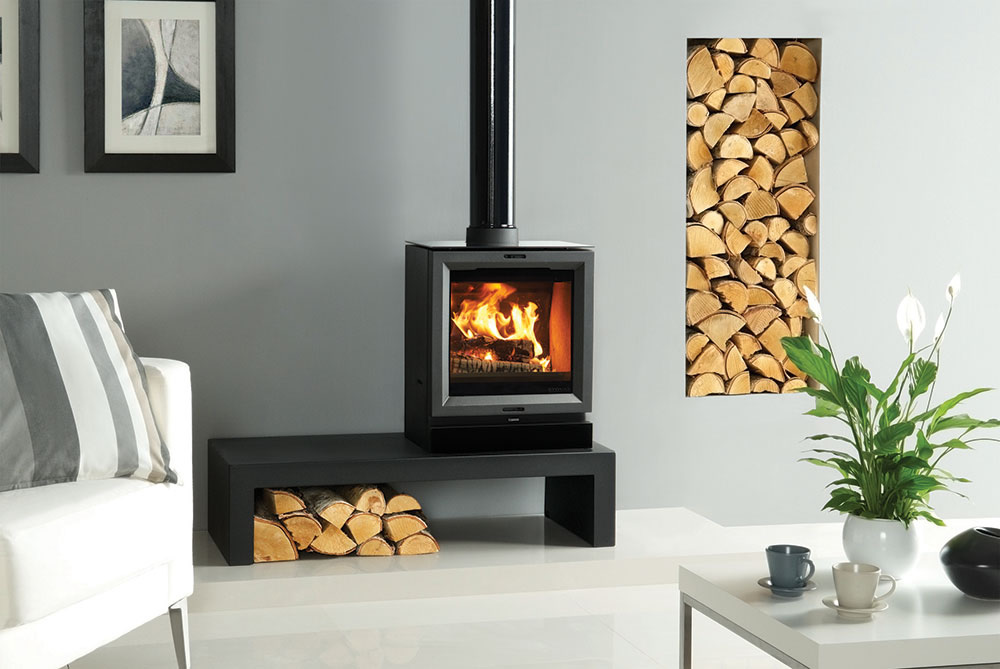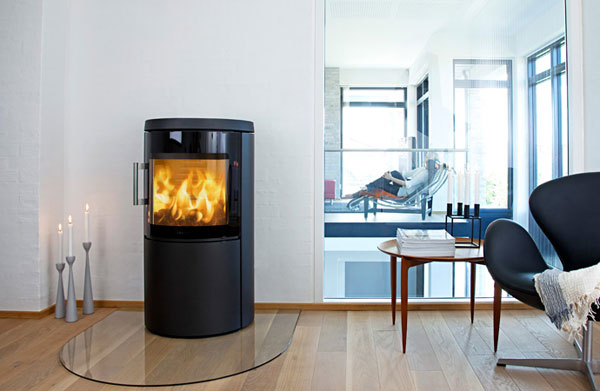The cost of a wood-burning stove today varies widely depending upon the type of model you are after and the brand. When you also add in the installation cost it can start to add up although there are significant long-term benefits. It is therefore essential that you get the most out of your wood-burning stove to increase output, reduce fuel costs and avoid the cost of repairs and replacement parts for as long as possible. So, what simple actions can you take to get the most out of your wood-burning stove and maximise efficiency?
Burn the right fuel
As we have mentioned on numerous occasions, while it might be tempting to use old wood which may have the remnants of paint or other materials, this is not worthwhile. Aside from the fact that the remnants of the paint or other materials could create toxic fumes when burned, the efficiency of this particular type of fuel is significantly less than well-seasoned wood which has a moisture level of less than 20%. There is also the fact that wood which contains other substances, such as paint, will likely create a tar like substance which will reduce the efficiency of your stove and also potentially damage the flue.

You can buy ready seasoned wood with a moisture rating of less than 20% or where you have the time and the space, you can season your own wood. This may take anything up to 18 months for relatively fresh wood but seasoned correctly there are great cost benefits.
Clean out the ash pan
While the modern day wood-burning stove may still have the look and feel of an old style machine, the technology inside and the developments of late make it extremely efficient. There are various elements and issues which will impact the efficiency one of which is ensuring that the ash pan is cleaned out on a regular basis. If the machine becomes cluttered with ash from prior use then this will detract from the fresh wood and reduce the efficiency. The whole idea of maximising the efficiency of your wood-burning stove is to ensure it is as clean as possible, all previous fuel remnants are removed and the new well-seasoned wood fuel is able to burn efficiently.
Control the airflow
When lighting your stove from scratch it can sometimes take a while to take hold, therefore the use of additional fire equipment such as paper and kindling can assist. This is also the time when you can increase the airflow to encourage burning and get the fire started. Once your stove is burning and the appropriate fuel has been added this is the time to reduce the airflow. Those who are perhaps using a wood-burning stove for the first time may be tempted to retain maximum airflow to increase the “burn rate”.

This is not the way to maximise the efficiency and the output of your wood-burning stove. There is such a thing as “overheating” your stove which creates gases that can potentially damage and warp parts of your stove and reduce the lifespan of your flue. The introduction of a simple stove thermometer on the flue pipe will alert you to periods of “overheating” which generally means there is something wrong with the airflow. At this point you simply reduce the airflow using the relevant controls on the stove in order to find the correct level.
Replace broken glass and damaged rope seals
It is very tempting to wait as long as possible to replace the glass on your wood-burning stove door even when relatively small cracks emerge. The truth is, as soon as you see these cracks they will be impacting the efficiency of your stove and will only get worse. As the cracks expand and grow more heat is lost in an uncontrolled manner thereby reducing the efficiency of your heat output and also increasing your fuel costs. Replacing glass on a damaged stove door is relatively simple and due to the demand for replacement glass this is relatively inexpensive.
There is also the issue of damaged rope seals around the stove door glass which is there to ensure minimal leakage and to maintain as much heat as possible within the body of the stove. Over time these rope seals will become damaged and will need to be replaced. Many stove owners prefer to do this at the same time as replacing glass on the stove door but the rope seals can become damaged and frayed even if the glass remains undamaged. Replacing the rope seals is very simple, simply remove the old damaged rope and use new rope and glue to ensure the area around the outside of the glass is sealed against the stove.
Replace broken firebricks and other parts
In reality the modern day wood-burning stove is a highly efficient machine which offers long-term cost savings. However, like any other machine the various elements need to be maintained and replaced if damaged. Some parts which may need replaced include the likes of firebricks which are vital for the combustion chamber, allowing heat to be retained in the stove body to maximise output. If there are any cracks or damage to the firebricks this will result in some of the heat energy escaping thereby reducing efficiency. The replacement of broken firebricks is relatively straightforward although it can be a little fiddly with your first attempt. Again, these replacement parts are also relatively inexpensive and offer significant benefits which will be immediately evident.
From time to time other parts of your wood-burning stove will need replaced and again the longer you leave it the less efficient your stove will be. In many ways, delaying the replacement of damaged parts is counter-productive from a cost angle because of the inefficiencies this can cause with your heat output.
Conclusion
Cleaning and maintaining your stove will ensure the relatively high efficiency ratings which come with the modern day stove. If you find a damaged part then it is important to replace this as soon as possible to avoid any potential danger to the local vicinity and people. It will also help in maintaining high efficiency and ensuring that your fuel bill is as low as possible. It is a false economy to delay replacing parts because you will be paying a greater cost going forward in terms of fuel because of the reduced efficiency.

